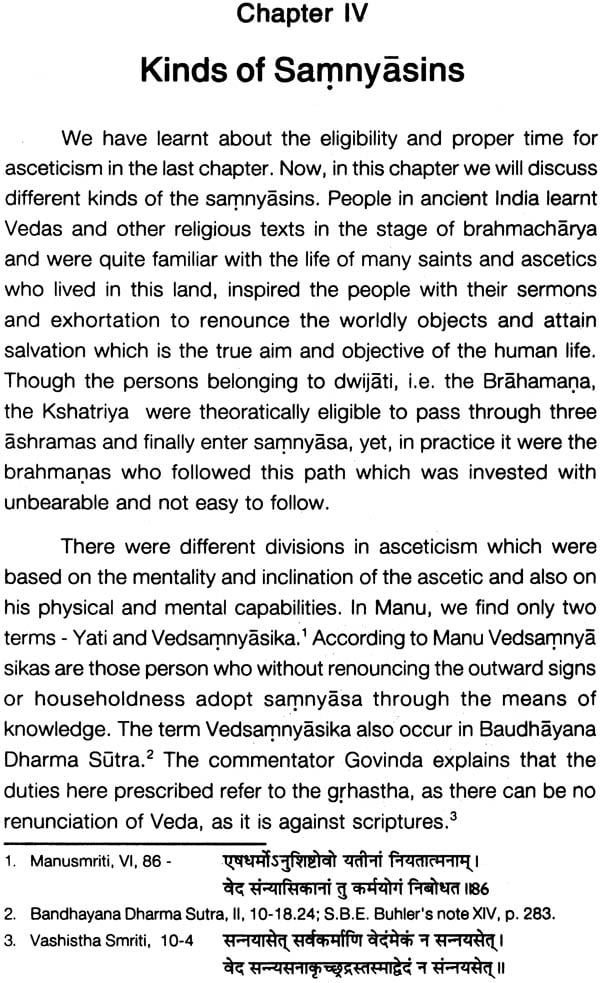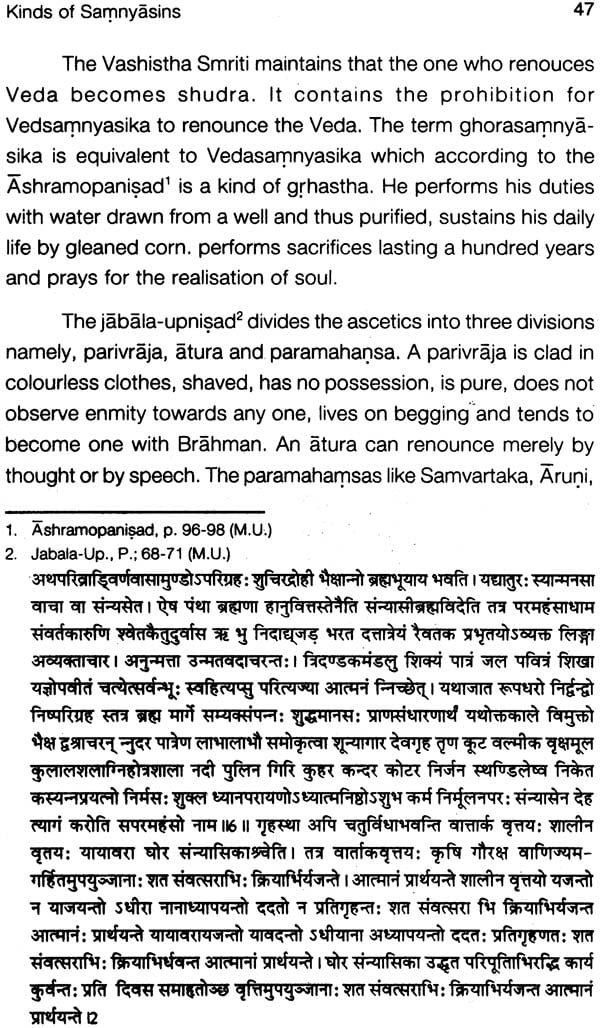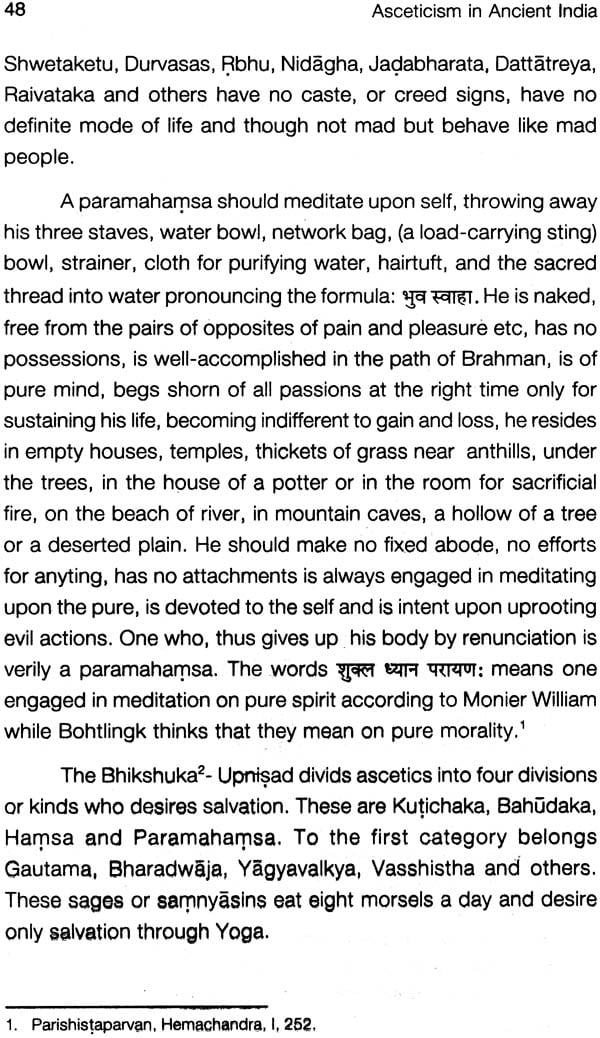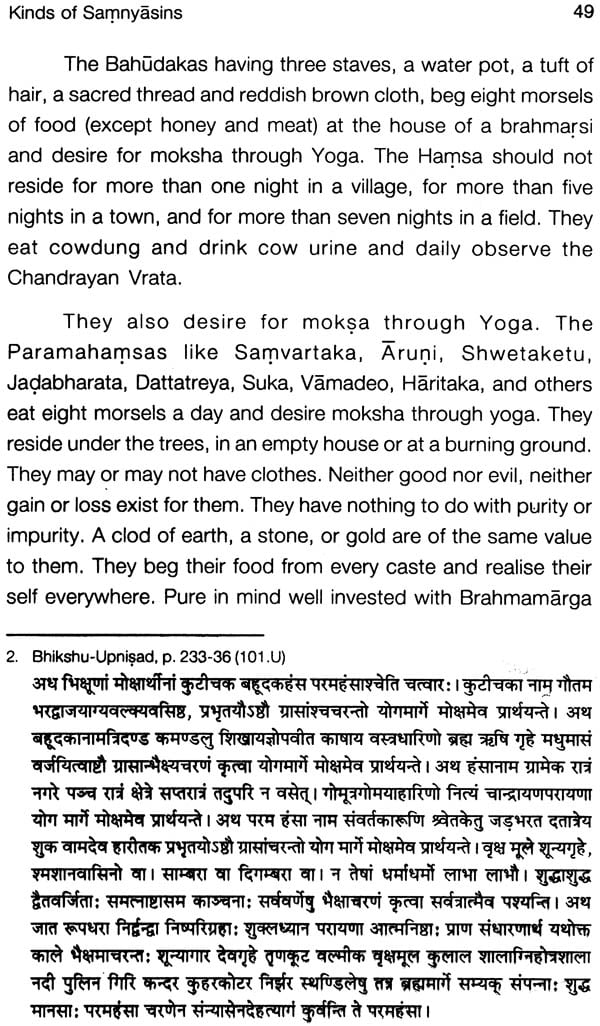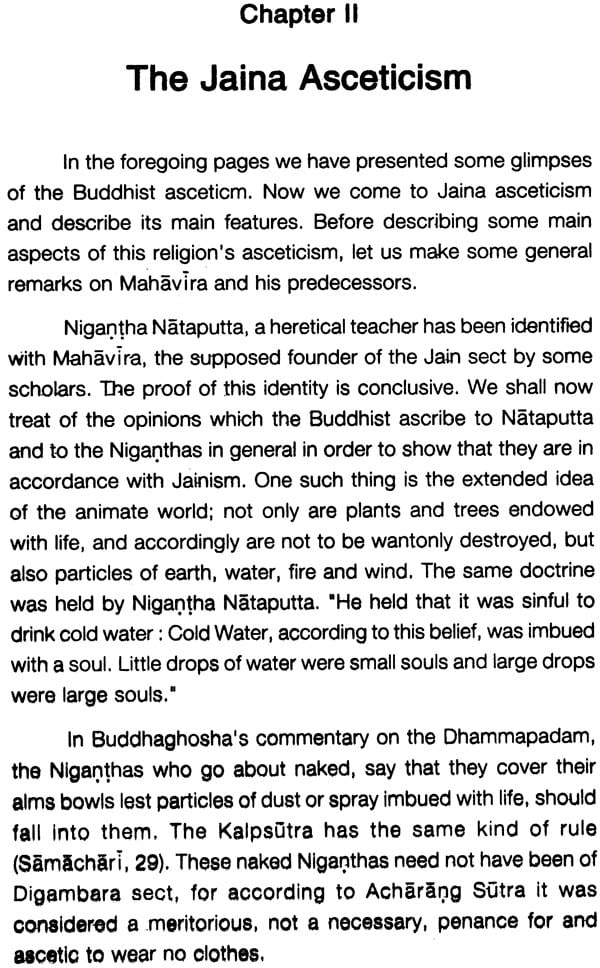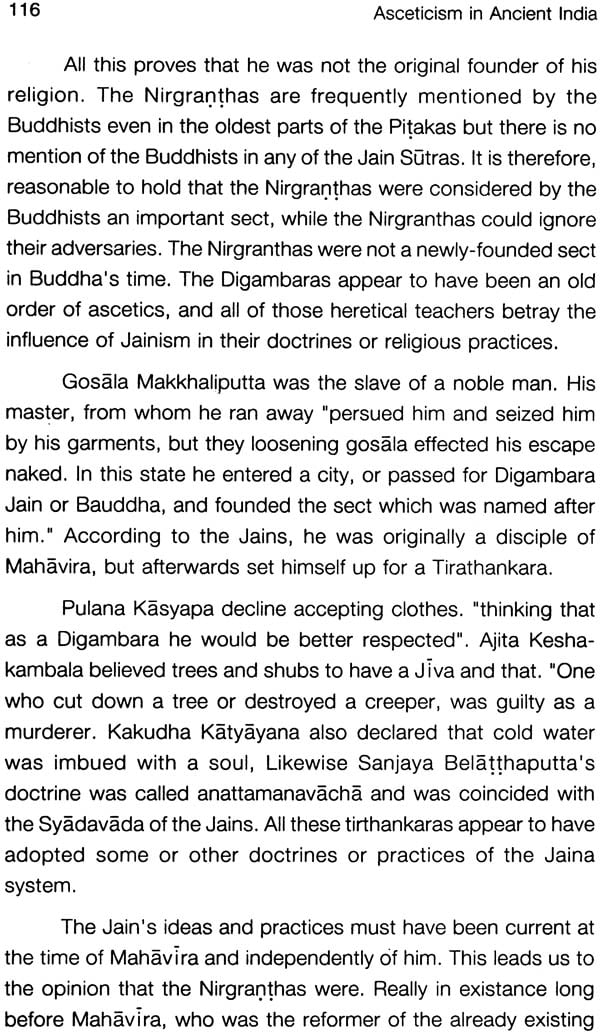
Asceticism in Ancient India Brahmanical, Buddhist and Jaina
Book Specification
| Item Code: | NAL802 |
| Author: | Dr. Ratanlal Mishra |
| Publisher: | Buddhist World Press |
| Language: | English |
| Edition: | 2010 |
| ISBN: | 9788190821292 |
| Pages: | 144 |
| Cover: | Hardcover |
| Other Details | 10.0 inch X 6.5 inch |
| Weight | 380 gm |
Book Description
In the Ancient Hindu society the system of ashramas had great significance. The Hindu Philosophers regarded the worldly as well as transcendental life of man as of equal importance but always preferred the latter. According to the perception of the thinkers the true aim of life is no indulge in sensuousness ad worldly enjoyment but to seek salvation by following the spiritual truth and living a pure chaste and sinless life.
The human life has multifarious facets and variant aspects. It embraces the reality of the world and activeness of life both in its dynamic progress. Indian philosophers had recognised the transitoriness and evanescence of the worldly objects. The happiness and permanent bliss do not lie in earthly possession which hinder rather than help in the realisation of internal happiness.
This kind of thinking gave rise to the institution of samnyasa. This doctrine of renouncing the world is found current not only in Hinduism but also in Buddhism and Jainism
The present book deals with the system of Samnyasa as it prevailed in Brahmanical, Buddhist and Jaina religions. It provides means of comparative study to reader of the system of asceticism as prevailed in three ,major religious institutions of the past. It is sincerely hoped that the present work would provide a sincere insight into the austere life of and ascetic who had willingly renounced of the comforts of the world.
Dr. Ratanlal Mishra was born in Manduwa Village (Jhunjhanw District) in 1925 A.D. He retired from the government service as Deputy Director in 1980 A.D. He devoted his time and energy to writing work as a result of which he has more than seventy books to his credit, His favourite Subjects of Study are History, Archaeology, Art and Literature. At present he is engaged in the study of various aspects of Ancient Indian Life.
The word renunciation is a phenomenon of long standing in India and its aim has been twofold. One is to attain by a solitary life and by methods of penance certain power over nature. The other is to conquer the flesh ad purify the soul. The samnyasin as India understands the ideal, should prize the spritual life so highly that everything else seems to him but dross. His every movement must be given up systematic self- training by which all old ties may be broken and all the world’s inverted values be turned upside down again. He must give up home and family and friends and possessions and wander out to live alone. He must beg his meals and so be dependent upon the charity of others for his life. He must own noting but his monastic robe, his staff and bowl, perhaps a few very simple utensils, a rosary for his prayers and one or two symbolic religious objects. Sometime he will wear in places of his monastic robe only a loin cloth or sometimes nothing at all.
In India nakedness is a token that one has learned so to despise the body that he has almost forgotten its existance. Indifference is one of the greatest virtues of a samnyasin, for it is the nagative side of that positives searching after God. The ancient scriptres express the ides thus, “ Let him not wish for death, let him not wish for life, let him wait for the time, as a servant for his wages-let him endure harsh language, and let him not insult any one, not relying on his body let not make enemy of anyone. Let him not return anger to the angry, let him bless when cursed--. Rejoicing in the supreme self, sitting indifferent, refraining from sensual delights, with himself for his only friend. Let him wander here on earth, aiming at liberation.”( Manusmriti, VI,45,47,48,49)
The ancient sages very wisely divided the human life into four stages. The ashrama system was the invaluable contribution of these sages. Once initiated, the boy enters into the first or student stage of the life of the twice born, and is known as brahmachari. The youth was sent away from home to study the religion and philosophy with some learned and saintly man in a secluded place, and there he remained till past twenty. Thereafter, he entered the second stage of life, that of the grihastha or house holder. Now, he was an honourable and useful member of society, to beget sons to carry on the name of the family and the offerings to the ancestors. The third ideal stage of life for the twice born is that of the Vanaprastha, or forest dweller. He should, now, live in the outskirts of his village, have leisure for self-culture and for the service of the community through the accumulated wisdom of his years. Finally, leaving his wife and all his possessions, but a staff and begging bowl, he should enter the fourth stage, that of samnyasa.
There were three orders of samnyasins in the past. One was that of Brahmanical ascetics and the other two were those of the Jains and the Buddhists. The Brahmanical ashrama system was the oldest while the Jaina and the Buddhist systems belonged to a later period. The present works deals with all of them. There is somewhat detailed discussion about the Brahmanical system while the system of the Buddhists and the Jains are dealt with rather briefly. Both the Buddhists and the Jaina code of discipline bear obvious cases of borrowing and adoptation from the Brahmanical sources. According to Jarl charpentier it is a strange characteristic of these sects(Jaina and Buddha) , so far as we known of them, that they adopted in their ascetic and in their whole mode of life the rules which had already been fixed by their Brahmana antagonists.
The majority of the samnyasins now a days within the various recognised and better orders are at least harmless old men, who though not very useful to society, live simple and retired life; while some of them are useful as teachers and as real scholars and thinkers.
But outside of these orders are hundreds of thousands of self-styled ‘holymen’ who have taken up holiness as business, and live on the reputation established in previous centuries by genuine ‘renouncers’. Every fellow who is too worthless to be a good citizen shirks his civil duties and forthwith dones, he ochre- coloured robe thus becoming ‘free’-free to live in luxury and vice at the expense of his better but more credalous fellow citizens.
The Origin & Development of Samnyasa Ashrama
In the ancient Hindu Society the system of ashramas had great significance. This institution was devised to make the life of man more cultured. The Hindu Philosophers divided the whole life of man into four divisions for the sake of spiritual progress and systematic existence. They regarded the wordly as well as transcendental life of man as of equal importance but always preferred the latter. Their view was based on the practical experience of human life. The fundamental functions of life were divided after psychologically and sociologically analysing them. According to the perception of the thinkers the true aim of life is not to indulge in sensuasness and worldly enjoyment but to seek salvation by following a spritual path and living a pure chaste and sinless life.
The concept of four purushartha is also based on the system of ashramas which were known as the brahmacharya, grihasta, vanaprastha and samnyasa. The Hindu philosophers had, thus expounded a doctrine which could relive the man from the bonds of life death and ultimately lead him to salvation.
Human life has multifarious facets and variant aspects. It embraces the reality of the world and activeness of life both in its dynamic progress. The inspiring element of Indian life-philosophy has always been to impart as orderliness, well-though arrangement and religiousness and piety to human life. Owing to his philosophical inspiration the life continued to proceed from one ashrama to another in an orderly manner and attained climax by doing pure and upright functions, which was to attain salvation or the ultimate reality.
These four ashramas were conceived with different aims, the first ashrama for attaing knowledge, the second for leading a worldly life, the third for worships of God by forsaking world and the fourth for attaining salvation by renouncing all the functions of the world. It was held that a man can achieve salvation only by following the path of “nivriti’ or final imancipation from worldly existence.
| Preface | vii-ix | |
| Part I | ||
| The Brahmanical Asceticism | ||
| Chapter I | The Origin & Development of Samnyasa Ashrama | 1-17 |
| Chapter II | The Pre-Vedic & Vedic Ascetics | 18-32 |
| Chapter III | Asceticism : Eligibility, Time etc. | 33-45 |
| Chapter IV | Kinds of Samnyasins | 46-54 |
| Chapter V | The Swarupa & Paraphernalia of Samnyasin | 55-61 |
| Chapter VI | The Daily Routine of a Samnyasin | 62-68 |
| Chapter VII | The Acharas of a Samnyasin | 69-77 |
| Chapter VIII | The Diksha Samskaras of an Ascetics | 78-88 |
| Chapter IX | Female Asetics | 89-94 |
| Chapter X | The Asetic & The Shradha | 95-97 |
| Chapter XI | The Antyesthi Samskara of a Samnyasin | 98-100 |
| Part II | ||
| Chapter I | The Buddhist Asceticism | 101-113 |
| Chapter II | The Jaina Asceticism | 114-128 |
| Chapter III | The Epilogue | 129-130 |
| Bibliography | 131-134 |
